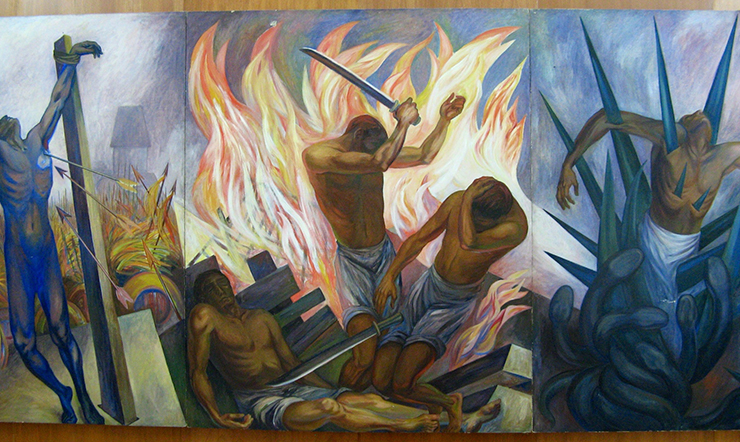Written by Stephanie Carmon
The other day there was a post on Facebook about a new restaurant that opened up in the Centro called La Casta Divina, The Divine Caste. It sparked a bit of controversy on the news and social media many people taking offense to the name. There were lots of opinions and speculations and some even likened the la Casta Divina to the Ku Klux Klan. Although that comparison seemed a bit extreme to me, it does drive home the idea that the Casta Divina was part of an intricate societal structure whose history includes opulence, progress, and wicked oppression. It also left many foreigners pondering: “What is the deal with the Casta Divina?
I explored this topic once before in an article I wrote about Ya’ax Boutique Hotel. The building where Ya’ax is now located once belonged to one of the most conspicuous figures in the Casta Divina, Olegario Molina Solis. Basically, all of the grandiose colonial buildings in the Centro of Merida and the luxurious haciendas were owned by persons belonging to the Casta Divina. They were the elite, the ruling class and the famous henequen hacienda owners. When the Mexican Revolution of 1910-1920 came to Yucatan, revolutionary general−who later became Governor of Yucatan−Salvador Alvarado, gave the name la Casta Divina, to these ruling class elites. Before the revolution, this group dominated the government, the banks, the trains, the education, the Church and even the social parties of the high society. Nothing happened in this state without the consent of the Casta Divina.



During the henequen boom, in the middle of the 19th Century, many Maya in Yucatan lost their rights to land and were moved to henequen haciendas. They became peons and were forced to work for these oligarchs and were paid in currency specific to each hacienda. Of course outside of the particular hacienda, the money had no value. In order to make large purchases, they had to go into debt with the hacienda owners and the Maya became debt bound and tax-ridden. It was a form of contract slavery and was the prevailing system of production at the haciendas. Apart from the financial oppression, the Maya were marginalized, abused and thought of as third-class citizens at best. The repression was such that the Maya revolted against those of Spanish descent in what is now known as The Caste War of Yucatán (1847–1901).
As is the case with all colonial empires, oppression, subjugation, and slavery were prevalent and a major way the elite class stayed in power. The name la Casta Divina in and of itself was given to this group of people as a sort of mockery of their status as if they thought they were godly. Most Yucatecans have studied about these times and, of course, many are outraged by the mistreatment of the Maya. However, when I asked several of my Yucatecans friends, both of Mayan and Spanish descent, if they were offended by the name of the restaurant, their answers were mostly indifferent in tone and they weren’t necessarily bothered. Some thought it in bad taste and were unsure what the establishment is trying to say with that name. Many say they might go, others said they would not go. I hesitate to say it’s like calling a restaurant the Ku Klux Klan, but more along the lines of The Royals or The Plantation, which there was a bar named The Plantation in the US and it also sparked controversy. Either way, if you decide to try out the restaurant, you will know what all the hype was about involving the name.


